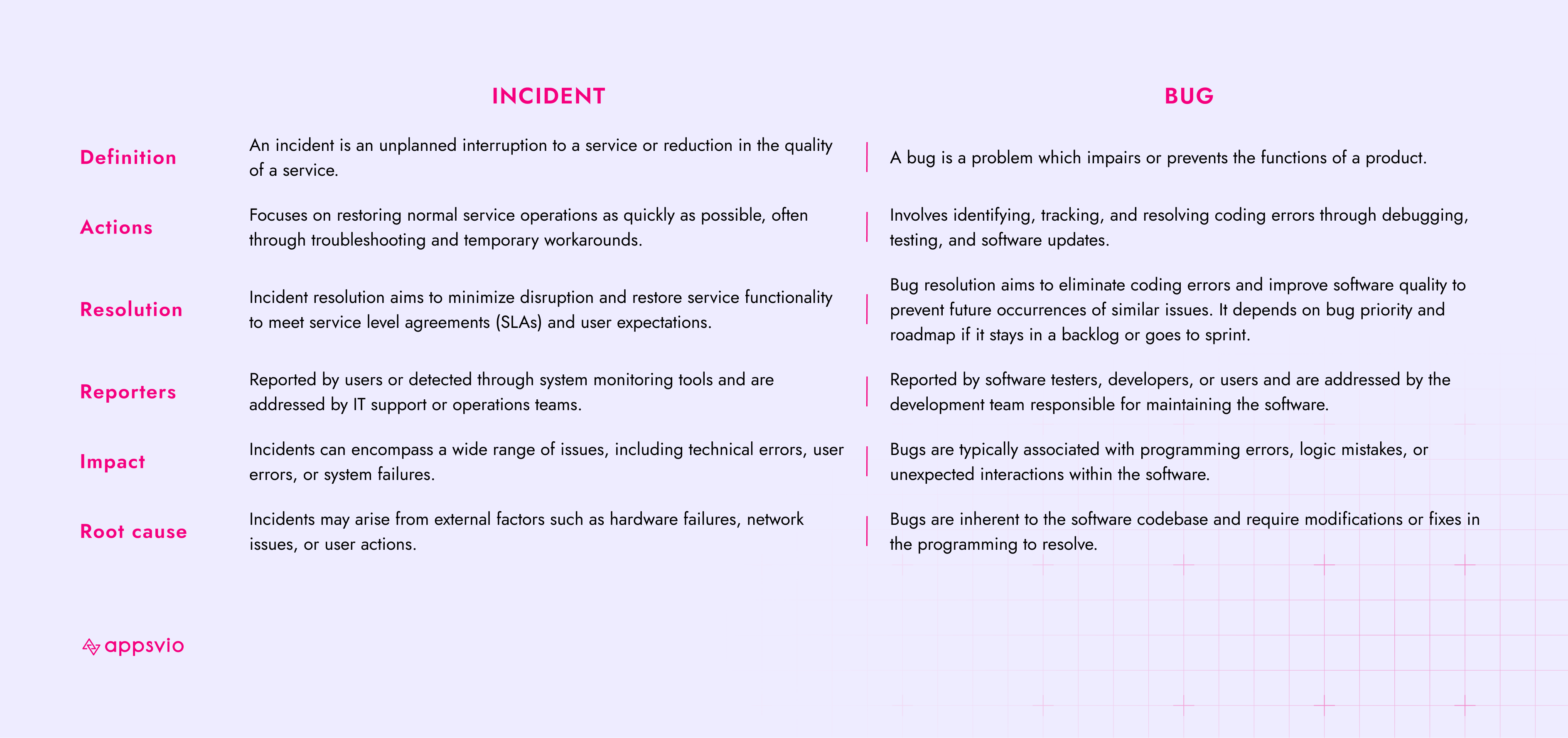Why do we need service desk reports?
Discover why you need ITSM Reports for service desk. Use ready-to-use businesss reports and gain valuable insights on your Jira agents performance.
How to report bug in Jira smarter? Read about bug reporting templates and start work more efficient with Atlassian products.
The bug issue type is one of the most known issue types. Used not only by testers and developers but also by everyone who has contact with software. Cross-team collaboration is not always easy. It demands flawless communication and clear standards. Customer support might be aware of developers' needs in the task, but the marketing team - is not so much. So, how to make a bug report in Jira smooth, efficient, and smart?
A bug in a software environment is an unexpected disruption of software or hardware. According to Atlassian, a bug is a problem that impairs or prevents the functions of a product.
Bugs can impact the software's functionality, performance, and usability, leading to frustration for users and potentially causing disruptions in operations. Detecting and fixing bugs is an essential part of the software development process, often requiring thorough testing, debugging tools, and collaboration among developers to identify and resolve issues efficiently.
“A bug is a problem which impairs or prevents the functions of a product.”
“An incident is an unplanned interruption to a service or reduction in the quality of a service.”

To report a bug with Jira Software, you can use unique “bug” issue types available for users. To create a comprehensive task, provide detailed information in the description, including steps to reproduce the bug, screenshots, error messages, and any relevant environmental details such as operating system or browser version. Set priority levels based on the bug's impact and urgency for resolution.
You can also assign appropriate components and labels to categorize the bug and ensure it reaches the right team or developer. Attach any additional resources that may aid in understanding or resolving the bug.
Throughout the process, monitor the bug's progress by checking for updates or comments from developers or team members. This ensures that the bug is addressed promptly and effectively.
Mostly, testers find bugs and report them. Whether during manual testing or automation, they search for mistakes in code, UX, and generally software work.
Testers face challenges during bug reporting that slow their work, add extra communication with other teams, and delay deadlines.
When we asked our tester, Karolina, she mainly said that the lack of standards in bug issue creations and insufficient data from developers can be the biggest difficulty. It primarily occurs at the beginning of the collaboration and takes time to develop the proper communication and standards.
“Every time a new tester is on board, adjusting to developers' working models and new environments takes time. It is good to set standards on how bug reporting should look. Then, testers know how to shape descriptions to be the clearest and most useful for dev teams.”

Other challenges we can list:
The answer to most of the challenges that testers and other teams that report bugs face is to implement bug reporting issue templates.
Thanks to that, everyone inside the organization can report a bug with already prefilled descriptions and know what data should be provided in Jira issue. This way, developers gain a well-completed bug issue with relevant information. They can focus on resolution and fixing it instead of asking additional questions or even more time-consuming - trying to reproduce this bug by themselves.
How many bug reports do testers create daily? What if we speed up the bug issue creation process by about 70%? You can save hours of their work monthly with templates.
“I use templates daily and can’t imagine working without them. First of all, I always know exactly what data I should put into the description, and I don’t need any checklists, etc. Secondly, I spend less time on issue creation and more on bug tracking - which is the best part of my job. Thanks to bug templates, I skip the tedious work of writing all over the same, but I have prefilled fields to complete. I don’t have any returning questions from developers, and our collaboration is top-notch.”

The bug reporting template ensures that essential information, such as the steps to reproduce the bug, environment details, severity, and expected versus actual behavior, is consistently documented. By employing a template, teams streamline the bug reporting process, reducing misunderstanding and ensuring that all needed details are captured efficiently. This facilitates more transparent communication among team members and enhances bug tracking and resolution efficiency, leading to improved software quality.
Summary: A concise title that summarizes the issue.
Description: A detailed description of the bug, including:
Environment details: Information about the environment in which the bug was observed, including:
Attachments: Any additional files or resources that may help understand or reproduce the bug, such as screenshots, videos, or logs.
Priority: The priority level of the bug is based on its severity and impact on the software and users (e.g., low, medium, high, critical).
Assignee: The individual or team responsible for investigating and resolving the bug.
Labels/Tags: Categorization labels or tags to classify the bug (e.g., UI, functionality, performance) and make it easier to filter and search for similar issues.
Additional Notes: Any additional information or context that may be relevant to understanding or resolving the bug.
On the Atlassian Marketplace, you can find template apps that can help you streamline your teams’ workflow and collaboration. Our app Issue Templates Agent allows users to use templates on the issue create view, further speeding up issue creation.
💡 Increase your reporting with full visibility of the project timeline: from the first logged hour to the last finished task with the Activity Timeline by Reliex.
Template name: Bug reporting
Summary: Bug [define issue]
Template body:
Description:
Steps:
Actual results: [Describe them here]
Expected results: [Describe them here]
Frequency: [Describe it here]
Impact: [Describe it here]
Screenshot / video: [insert screenshot or video]
Environment details:
Software version:
Additional fields:
⭐️ You can download the free Issue Templates Cheat Sheet: Jira edition for free if you need more templates to copy. Inside:
Happy templating! 😊
Discover why you need ITSM Reports for service desk. Use ready-to-use businesss reports and gain valuable insights on your Jira agents performance.
Gain one comprehensive tool for bug reporting, customer support, and even HR management. Jira Service Management can be a HR tool for reporting days...
IT reporting should be implement in every organization. Lear more about service desk metrics and make your ITSM reporting better with ITSM Reports...
Subscribe to our newsletter for insider updates on the latest features, tips, and insights from Jira experts. Enhance your Atlassian apps and stay ahead!